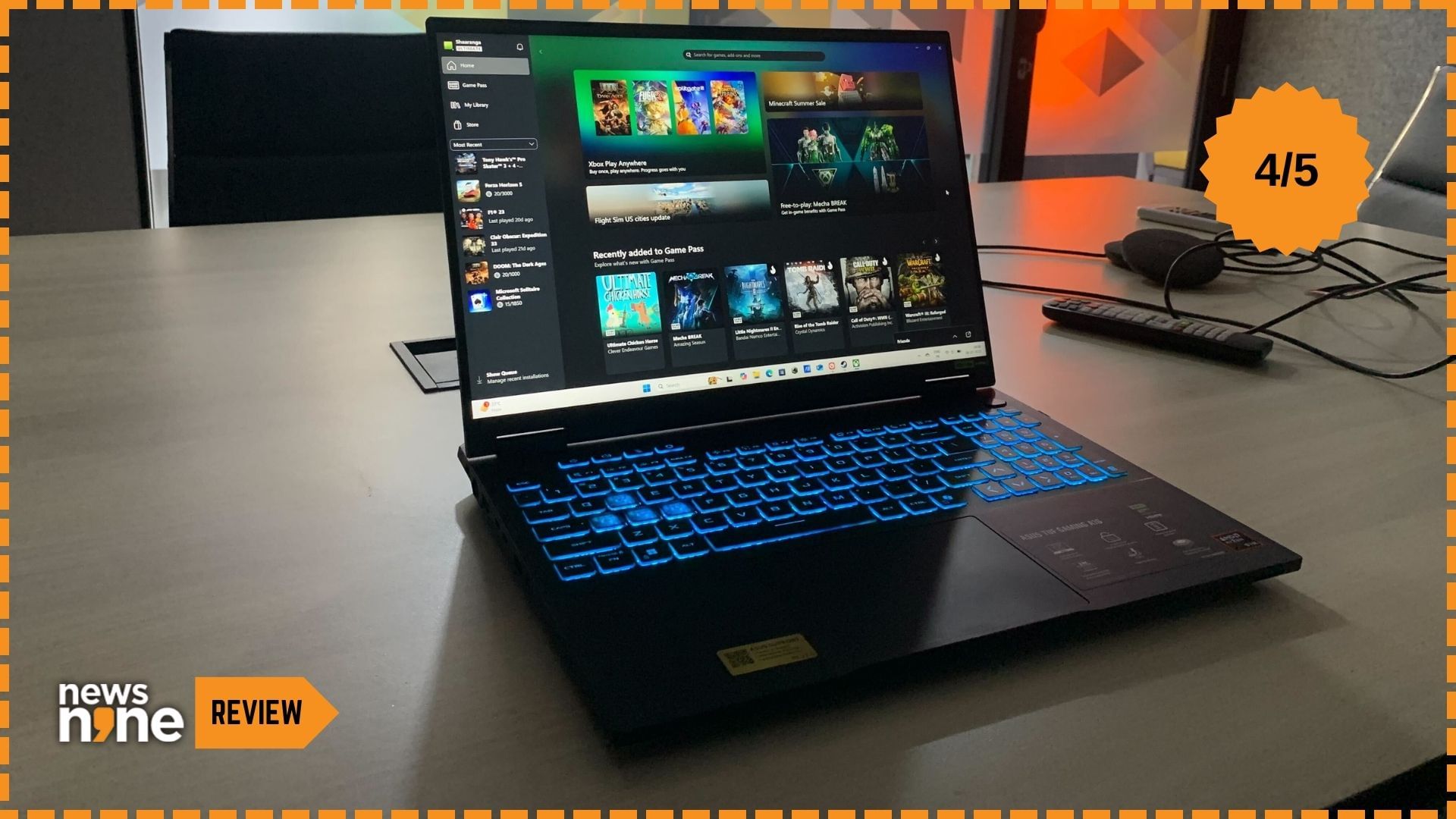New Delhi: Last month, Asus expanded its ROG and TUF lineups with new laptops, including more powerful versions of the TUF devices. The TUF A16 is powered by an AMD Ryzen 9 8940HX processor while the TUF F16 is powered by the Intel Core i7 14650HX processor. If you are looking to invest in a high-performance device with superior specifications, but are constrained by a budget, then these machines are sensible options, as both the RAM and the storage is upgradeable. The 16 inch display has a high colour accuracy, covering 100.00 per cent of the SRGB colour space, which is suitable for content creators who enjoy gaming as well as amateur game developers.
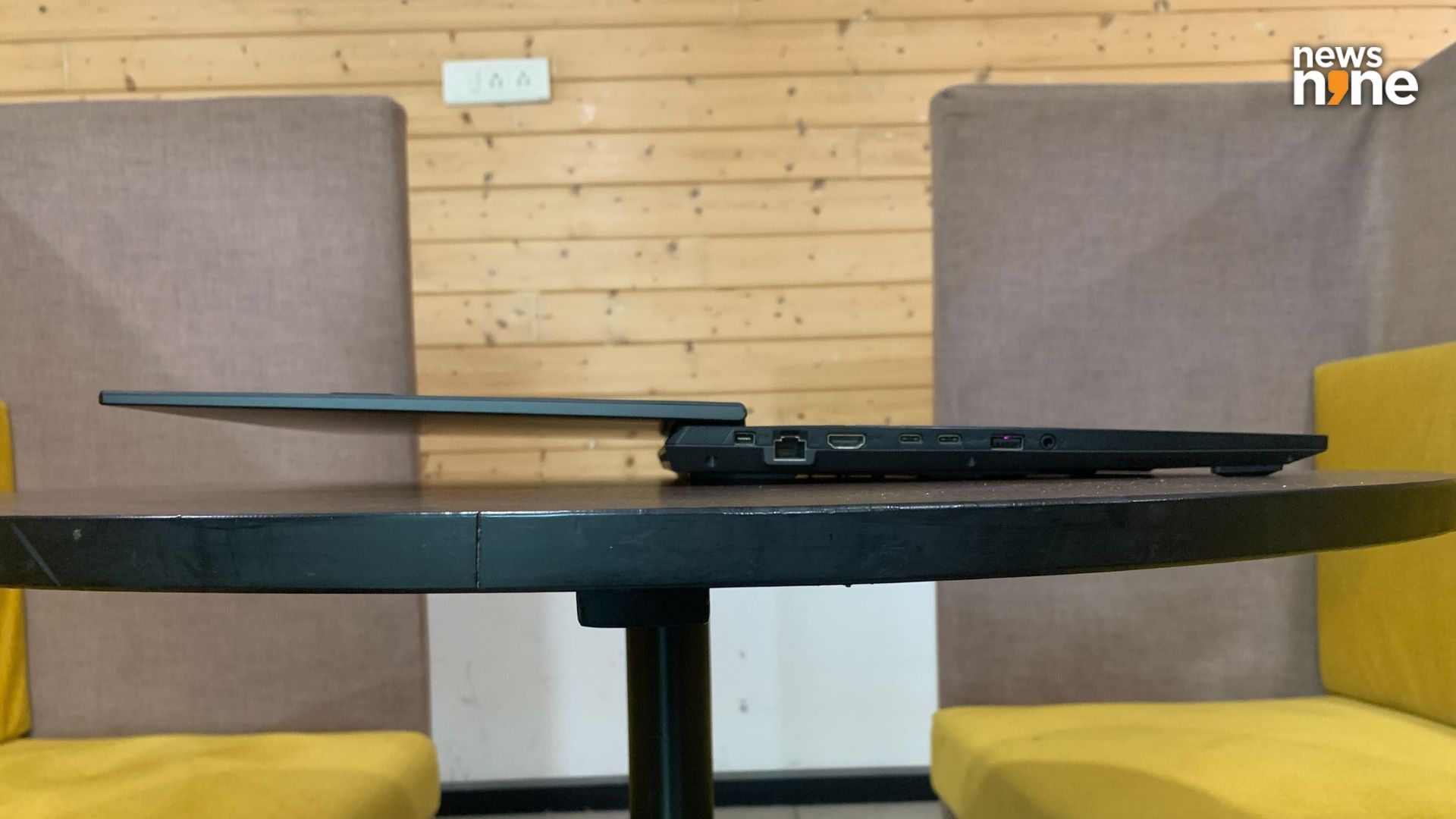
For a gaming laptop, the TUF A16 is pretty thin. (Image Credit: Aditya Madanapalle/News9).
The military grade build quality ensures that the TUF Gaming A16 can handle regular wear and tear, as well as frequent travel. The devices are more affordable than the premium ROG devices, which makes it attractive for gamers who want performance without the bling. We got to try out the TUF A16, which ships in a box that contains the laptop and the rather large and bulky charging cable. The TUF A16 offers a potent combination of durability, performance and mobility.
Build and Design
The laptop lid opens up without any lift from the base, and goes all the way back to 180 degrees. The hinge is not exactly located at the back of the base, with a section jutting out that gets covered when the lid is opened entirely. Now usually we complain about the base lifting with the laptops, and having to hold the base down when opening the screen. Here, the problem is inverted and you have to hold the base down if you want to close the screen from a 180 degree configuration. This display is one of the hero features of the device, and is a 16:10 IPS panel. The extended hinges appear robust, and there are rubber feet on the lid to prevent the ugly marks from keycaps. The top edge has the camera but lacks a physical shutter.
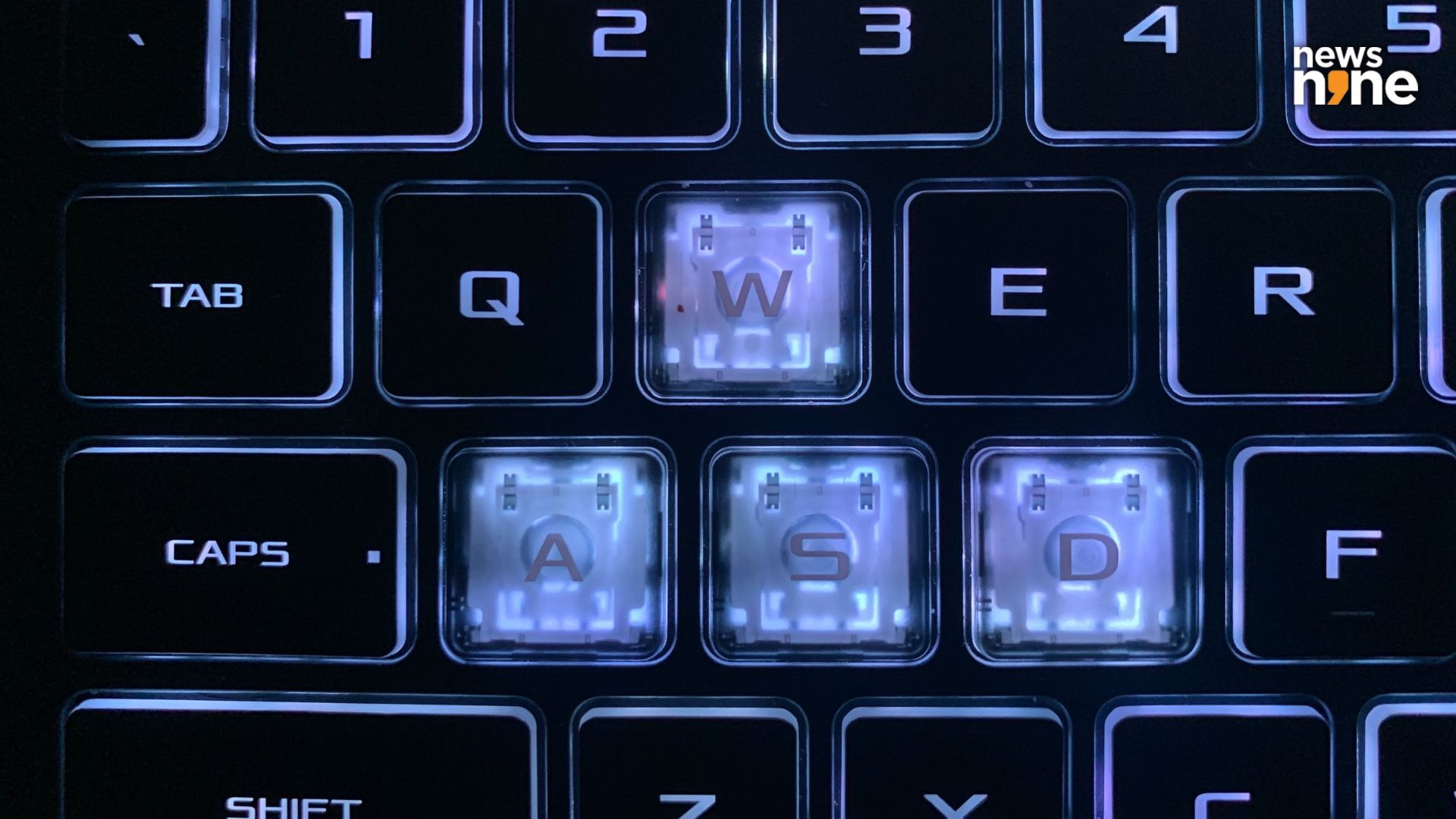
The WASD keys are semitransparent. (Image Credit: Aditya Madanapalle/News9).
The keyboard is sensibly designed specifically for gamers. All the arrow keys are full-sized, which is a rarity for gaming laptops. The power button is located on its own, and is not backlit, so there is now ay that it can be pressed by mistake when taking a screenshot or hitting backspace. The pressure needed to operate it is different as well, more than the other keys. There is also a NumPad on the right side which is great for RPG games, programming macros and using parametric software such as Adobe Premiere Pro or 3DS Max. The spacebar has been reduced to accommodate a Right Ctrl key in addition to the CoPilot key. The WASD keys are differentiated with semitransparent keys.
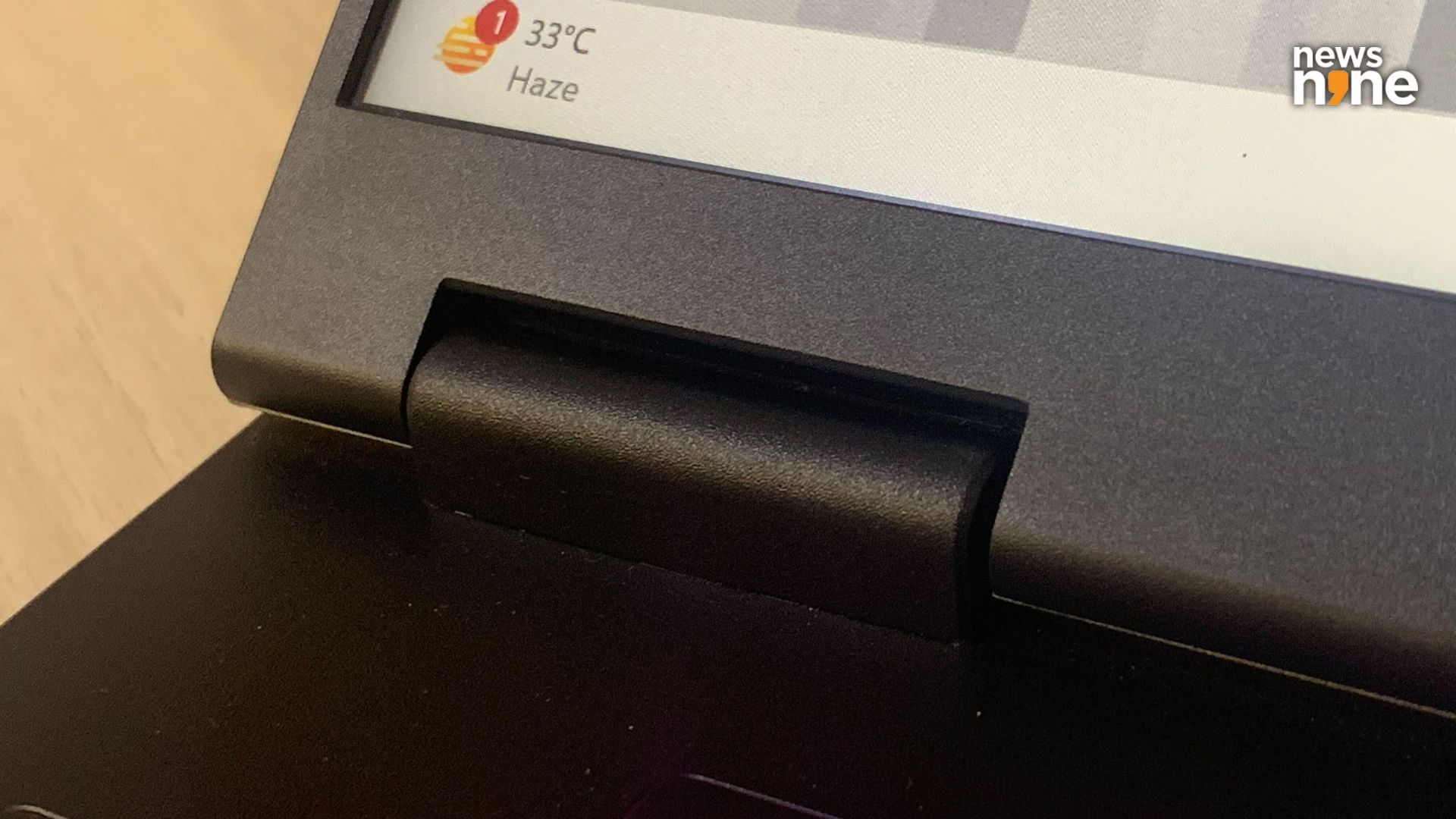
The extended hinges are robust. (Image Credit: Aditya Madanapalle/News9).
The trackpad is comfortably large, but not so ginormous that resting palms interfere with computer operations. The trackpad is also shifted a bit towards the left, because of the NumPad. There are some extra buttons located on the top, that are for conference calls. These are useful if you are using voice comms on TeamSpeak or Discord while videogaming. There are Asus defined functions assigned by default, that are related to the icons on the function keys, but these can be restored to system default by pressing the Function and Escape key. If you don’t keep track of the state of the Function keys, you can end up doing the wrong things, like putting the machine to sleep when you want to take a screenshot.
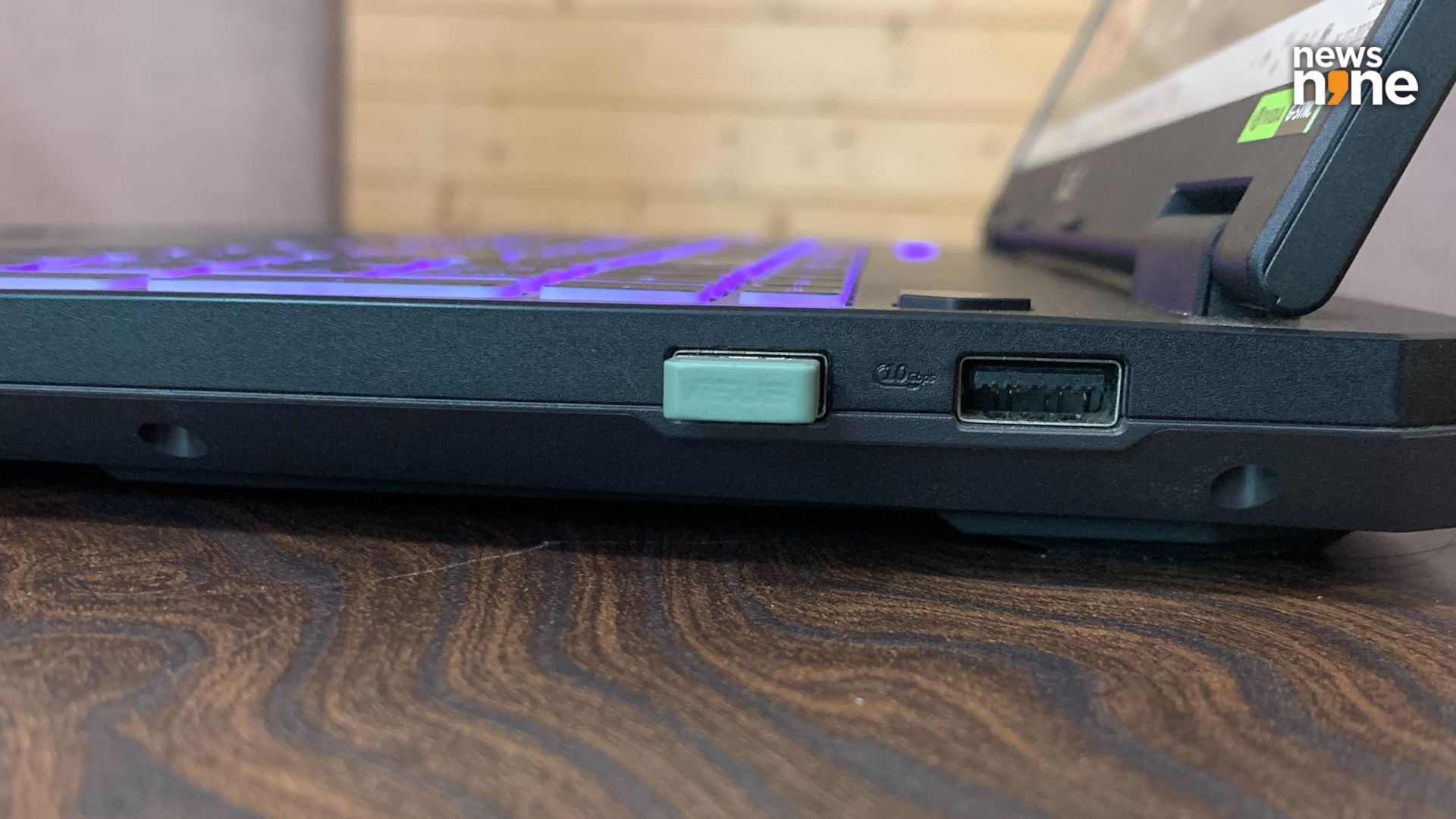
The ports on the right side of the device. (Image Credit: Aditya Madanapalle/News9).
Most of the ports are located on the left side. These include the power port, a full-sized RJ45 Port, an HDMI port, two USB-C ports a USB-A port and a 3.5 mm audio jack. The audio port is located towards the front of the machine. There are two additional USB-A ports on the right side. This is a practical configuration with plenty of USB-A and USB-C ports, no one can complain about the lack of ports here. The mouse has plenty of room on the right side and will not trip over an external hard drive, power bank or connected smartphone. The front edge of the machine has a chamfered edge allowing for the lid to be lifted easily.
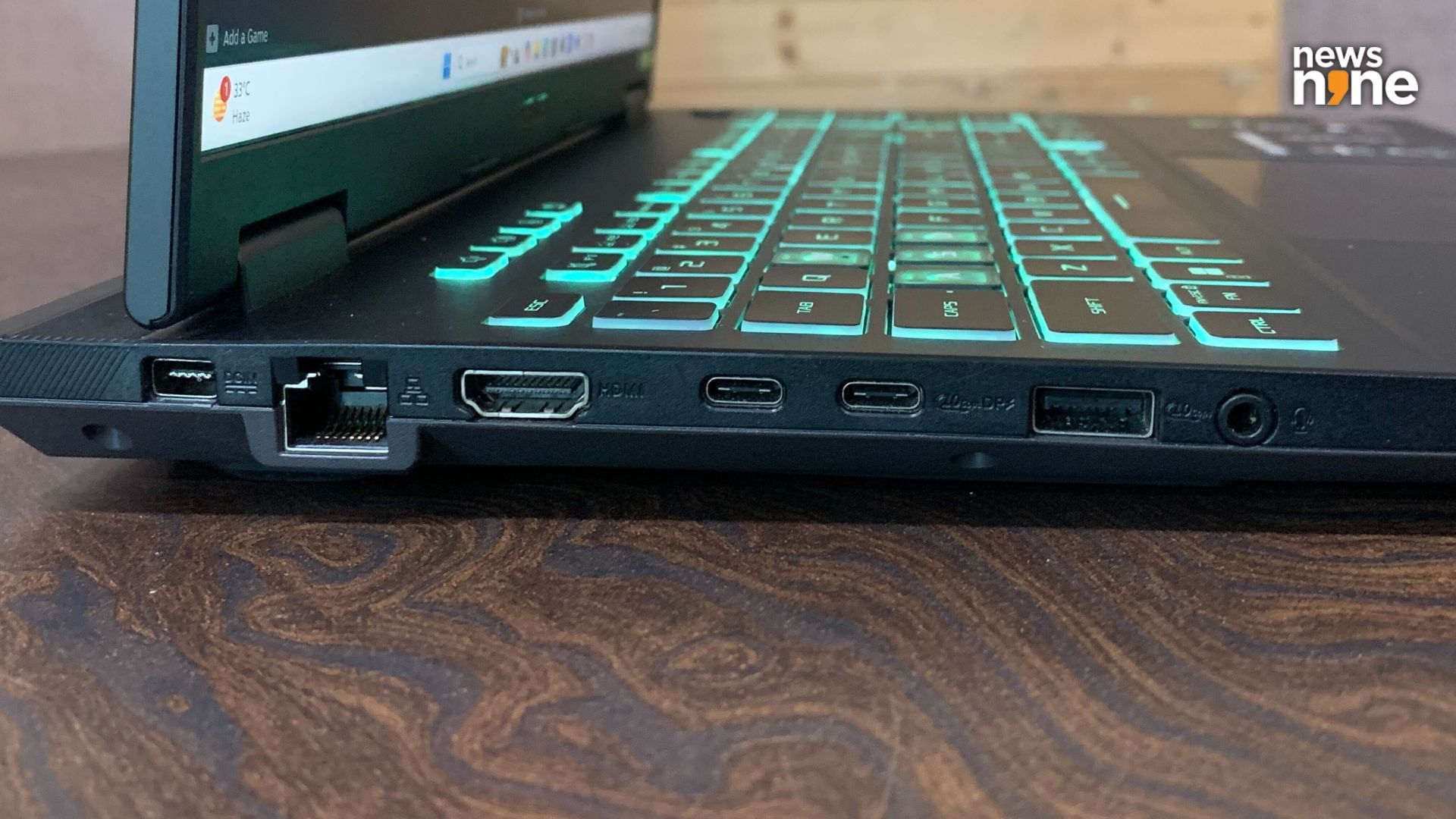
The ports on the left side of the device. (Image Credit: Aditya Madanapalle/News9).
There are no vents on the sides of the laptop. The vents on the back of the machine throw out the hot air that is sucked in through the vents on the base. There are chunky rubber feet on the base that provide room for the fans to breathe, and the speakers to throw the sound. The pair of speakers are located on the sides, towards the front of the device. The sound is thrown outwards and sidewards, and the positioning prevents the sound from being muffled. The base of the laptop also has a triangular orange piece, which is a signature of the TUF series of laptop. There is also the TUF branding on the top right of the lid. The device is available in only one colour, Jaeger Gray.
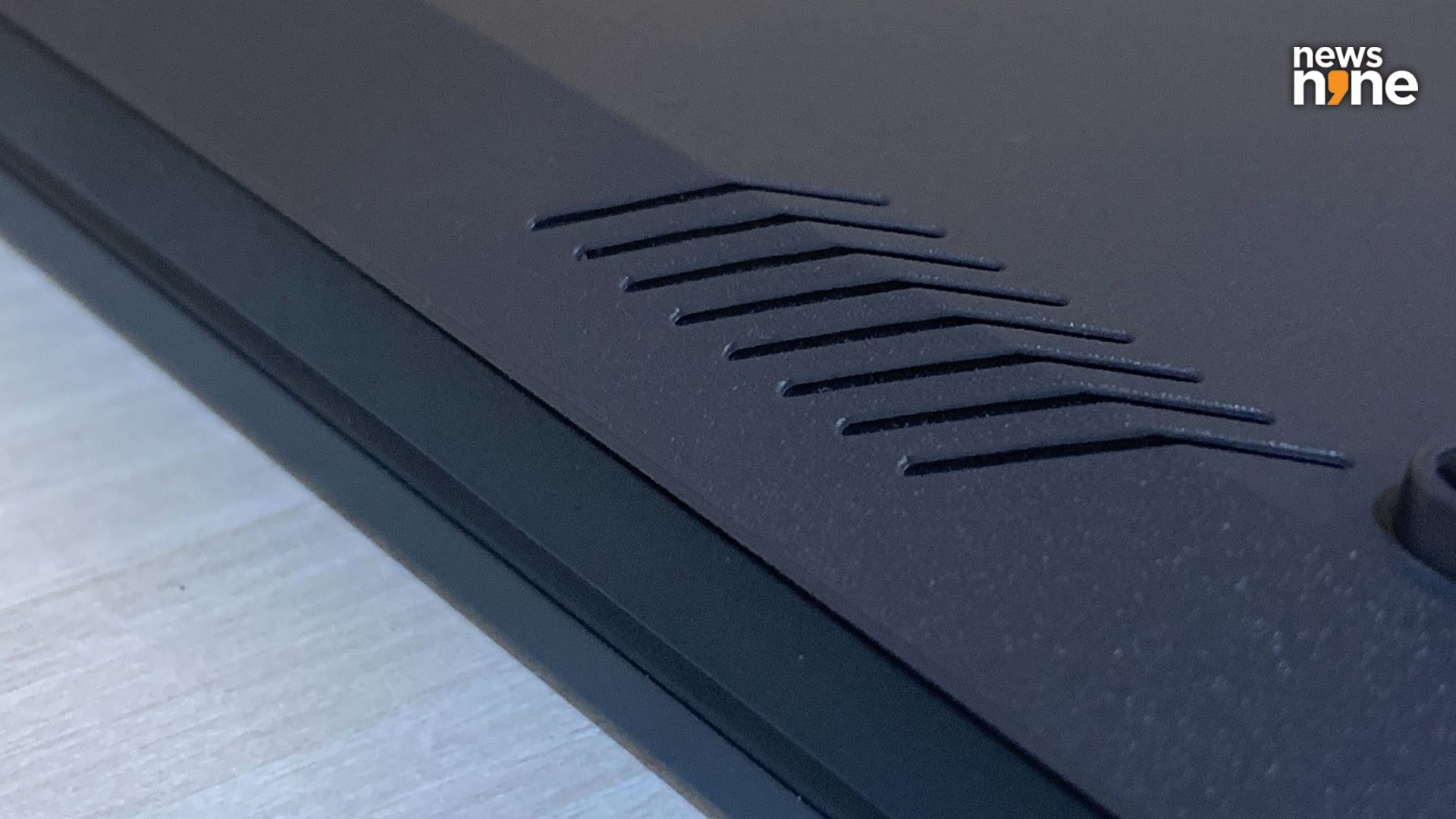
The speaker grilles are positioned sideways on the edge. (Image Credit: Aditya Madanapalle/News9).
Now the laptop weighs 2.2 kg, and there are some issues with mobility. This is a machine that is mostly designed to be used as a desktop, as in, perpetually plugged in. The plug requires a large point for appliances, and will not fit into say the plug points on metro rakes. The adapter brick is also on the large and hefty side. Still, it is not a problem to commute everyday despite the weight and bulk of the machine, as well as the charging cable. All things considered, the TUF Gaming A16 has a robust construction, with sensible and practical design choices, with no obvious flaws in the build of the machine.
Performance
The TUF A16 is powered by an AMD Ryzen 9 8940HX Processor supported by an Nvidia RTX 5070 Laptop GPU with 8GB of VRAM. There is 16GB of DDR5 RAM and 1TB of Storage space, both of which can be upgraded after purchase at a later date. This is a strong enough configuration, but certain multimedia and graphics applications may require more VRAM, so that is something potential buyers have to check. We were really satisfied with the experience of the laptop, and gaming with a 5070 card is just an incredible pleasure. A number of synthetic and real-world benchmarks are embedded below.
Asus TUF Gaming A16 2025 by Aditya Madanpalle
The battery juices up to 60 per cent in half an hour, with the screen on max brightness and the keyboard backlighting on. Laptops in the same category manage to juice up to about 50 per cent, provided the laptop is switched off, so we were really happy to see how quickly the laptop managed to juice up. The battery reaches 97 per cent in one and a half hours and a full one hundred per cent after one hour and 47 minutes. Now the performance of the laptop starts deteriorating below 40 per cent itself, even for regular office tasks. Videos start framing, and software begins to run sluggishly. You have to micromanage the apps and settings to get the most life out of the battery.
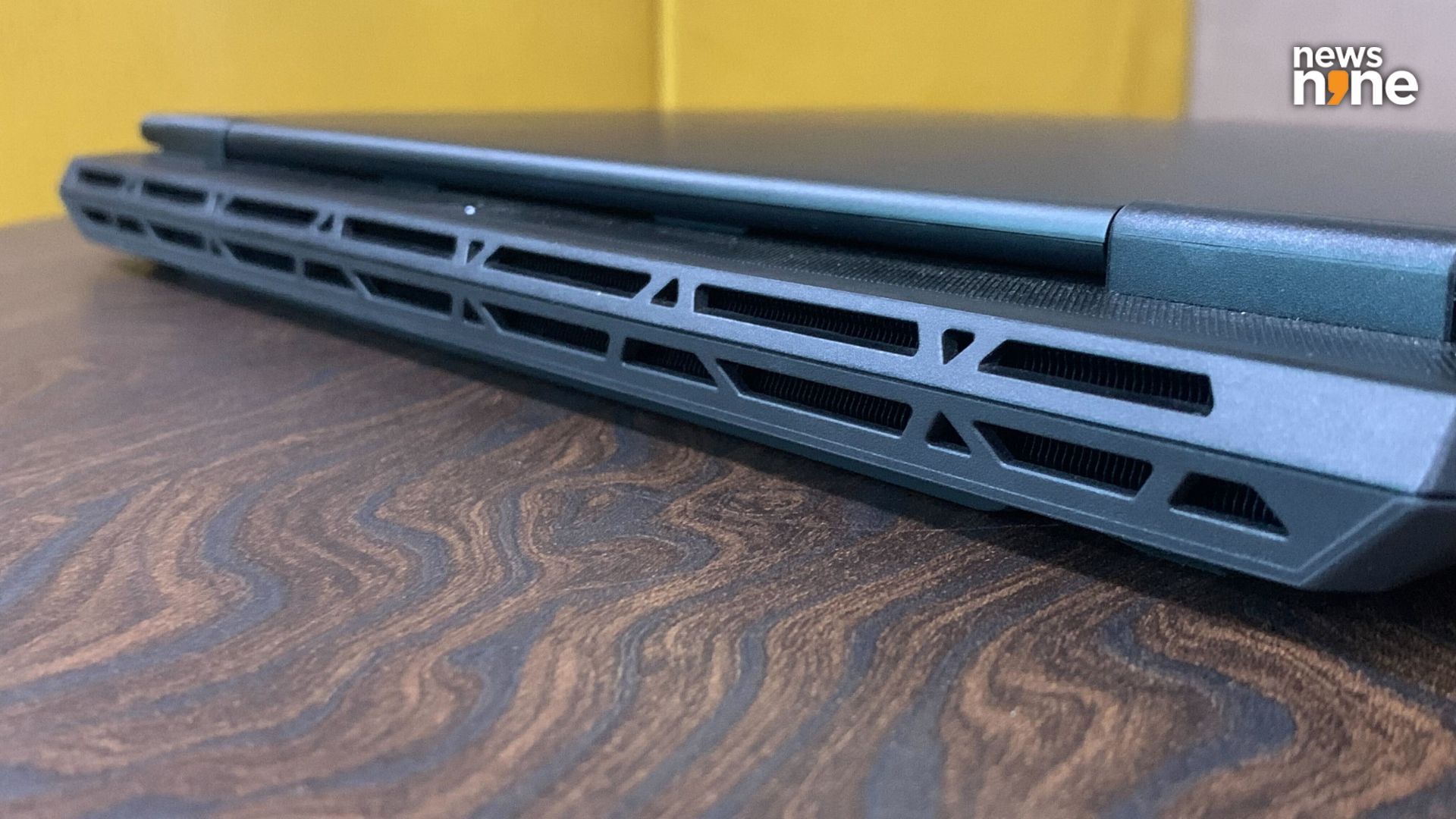
The laptop has an aggressive cooling solution. (Image Credit: Aditya Madanapalle/News9).
The on-device audio is good enough for office conference calls (it is fun to see em struggle anyway) but not really for gaming. There is a clarity benefit for having the sound closer to your ears with headphones. To stress-test the machine, I decided to keep piling on work till the computer could not handle any more. There is no way any device can survive this kind of stress testing, the approach is designed to find out exactly when a machine starts to struggle, and all machines will eventually fail. So started with Discord on voice comms with a party, while using the developmental virtual tabletop game Talespire. Then on Nvidia Broadcast, I turned on the Studio Voice mode for the mic, and Noise Removal for the speakers. Using Virtual Key light as well at this point overloads the graphics card, resulting in a prompt to turn the feature off, but at least there is sufficient VRAM for the feature and there is no sluggishness yet.
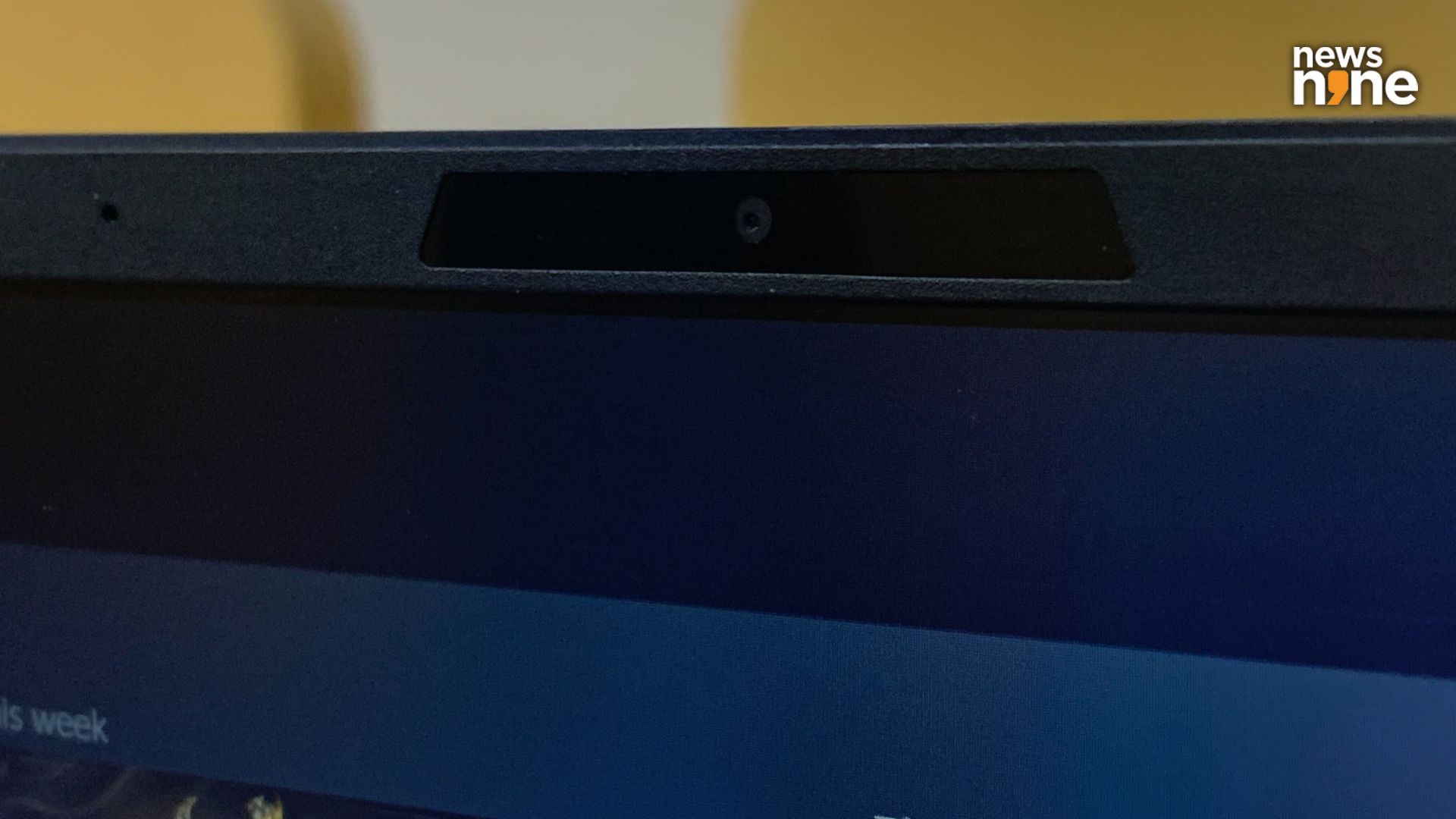
There is no physical shutter on the camera. (Image Credit: Aditya Madanapalle/News9).
The Virtual Key light does not look that good anyway. In the interest of a smoother ramp, we turned off the cam settings. Now, extending the screen to another machine with GlideX, or Streaming the game through Steam slows down the machine to a crawl. There are random freezes of apps, and the videos start to slow down or freeze as well, suddenly fast forwarding in bursts to catch up. Nvidia Broadcast crashed at this point, freezing my feed. My friends made memes of me. So if you are on voice comms with a party, while gaming, and using the graphics card for processing the inputs, and using a secondary display, the computer begins to struggle. This is about when you start missing the extra cores on Intel. Camera quality is good though, even in low-light setting, with the large screen and keyboard providing plenty of illumination.

The camera quality is pretty good in low-light settings. (Image Credit: Creek).
The complex audio juggling can hinder the experience. If you are using OBS Studio to record a press conference, then the Nvidia Broadcast software is processing the audio. If you turn it off mid-recording to free up resources, there is a gap in the recording as the audio gets switched around. It is also possible that putting the device on mute does nothing, and say the benchmark audio continues to play. Keeping track of the state in which the function keys are is additional information that you need to hold while operating the machine, which is stressful. For example, you can put the machine to sleep when you want to exit full screen. None of the problems with the experience of the laptop is because of Asus though. Asus actually provides you with all the tools that you need to enjoy the machine, and get the most out of the hardware.
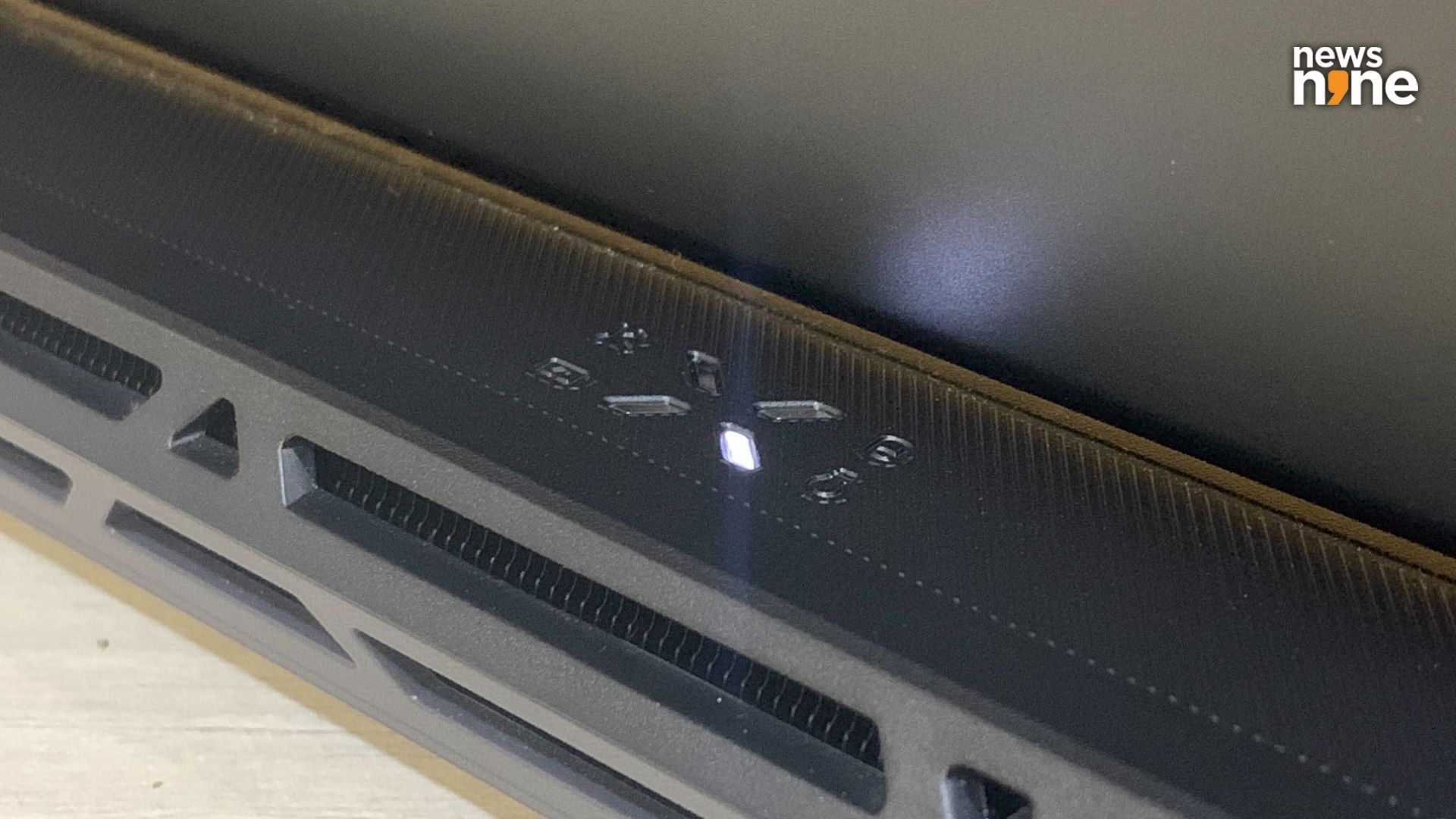
The indicators at the back tell you at a glance what the laptop is up to. (Image Credit: Aditya Madanapalle/News9).
We wish the ScreenXpert software was made for a keyboard and mouse combo as well, not just touchscreens, with the ability to move software between screens when they are in full screen mode. The GlideX software is really powerful, allowing you to use spare phones as webcams, transfer data between devices rapidly, and extend your computing environment to any devices in the vicinity. The problem is that the connections tend to drop off when the lids of the connected devices are closed, requiring you to extend all the screens. Also there is no way to chain screens vertically, only sideways. The Armoury Crate software is useful for changing a few settings, understanding the performance of the system at a glance, and managing the RGB lights. The MyAsus software provides more granular access to system settings.
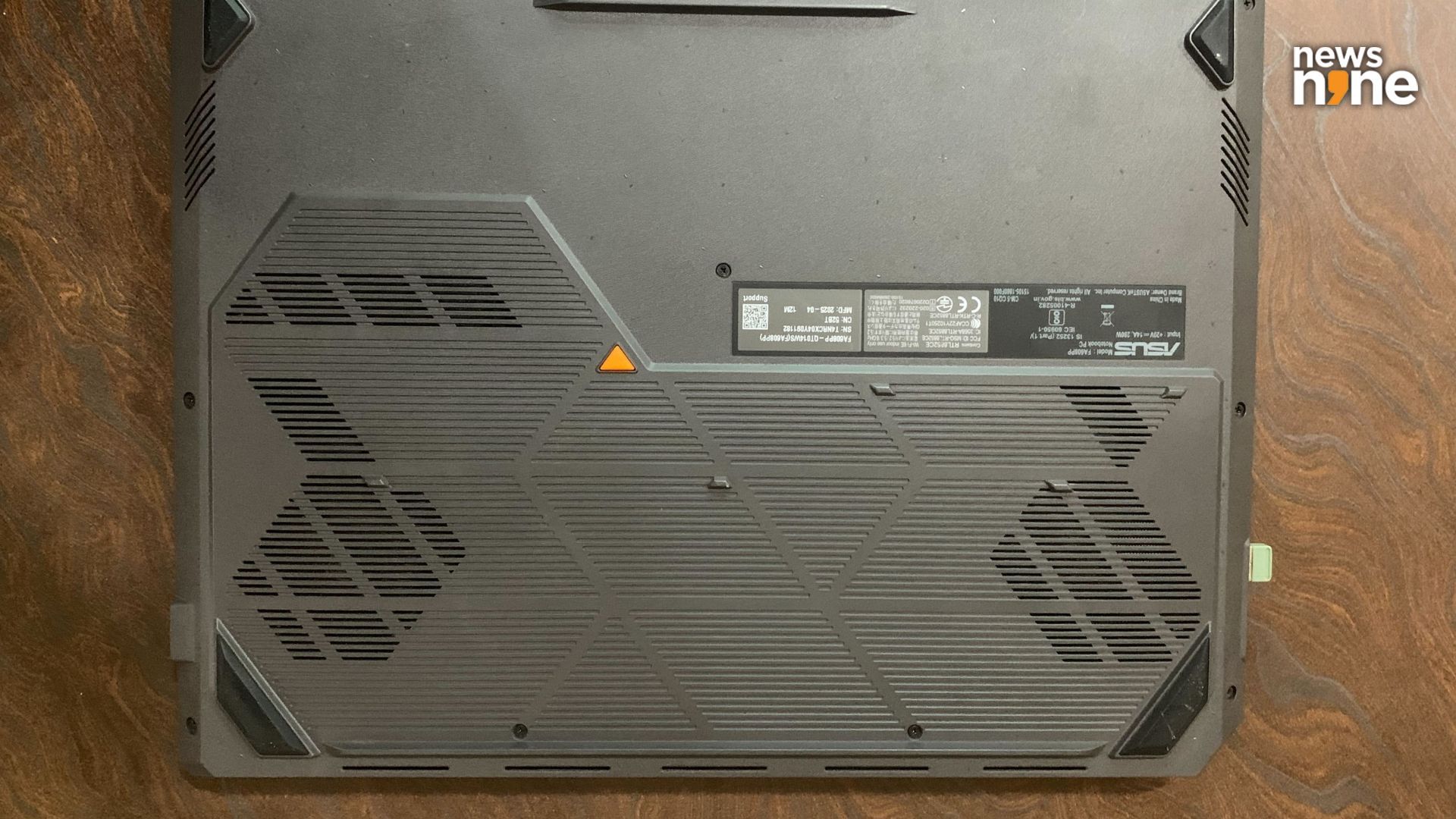
The base of the laptop. (Image Credit: Aditya Madanapalle/News9).
The large screen performs well except under direct sunlight outdoors, which is not a situation this device is likely to be used in. The brightness goes up to 400 nits, and the viewing angles are great. The great thing about the IPS panel is that it is not at all reflective and manages to spread out any light sources. The display manages to hold its own even under challenging lighting conditions. The sound is also clean and loud, with not much muddiness in the bass frequencies. We measured the volume going up to 87 decibels at the distance the laptop is going to be used at, which is within the safe limits.
Verdict
Asus has provided a complete package when it comes to this 16 inch gaming laptop. The price of the device is just right at Rs 169,990, but bear in mind that by pushing the budget a bit, the TUF Gaming F16 with an Intel core i7 can be picked up for Rs 1,79,990. The extra cores on the Intel silicon comes into play when you are multitasking heavily, or if you browse with hundreds of tabs. The keyboard and the I/O slots configuration are mostly sensible and practical, but we did find ourselves unexpectedly turning on Airplane Mode or putting the machine to Sleep in the middle of games. The keyboard backlighting stopped working a few times, something that was fixed with a restart. Apart from these, there were no problems with the laptop over the two weeks that we used it for.
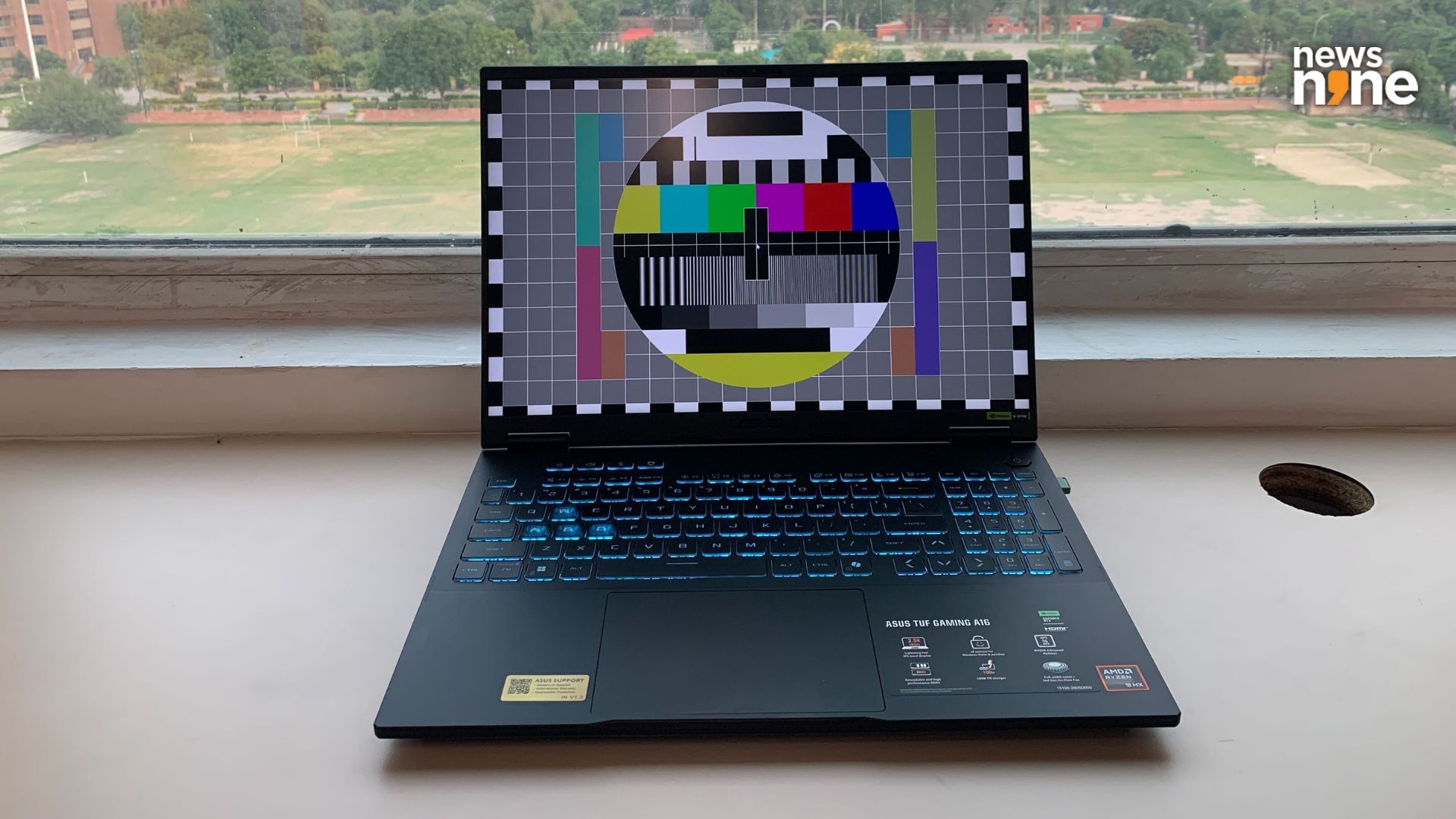
The Asus TUF Gaming A16 is a robust, powerful and affordable gaming laptop with a large, accurate display. (Image Credit: Aditya Madanapalle/News9).
Now the Radeon graphics on the AMD is pretty powerful and capable on its own, so you get enhanced capabilities even when the graphics card is turned off to conserve energy. What you are getting with Asus is an aggressive cooling solution that does not get too loud even under heavy load in the sweltering Indian summers, as well as robust construction quality. We really liked the fact that both the Storage and the RAM are accessible and upgradeable. The TUF A16 is a gaming laptop for those looking to replace a desktop. This is a functional and versatile device, providing a compelling option for a reliable, high-performance machine.
